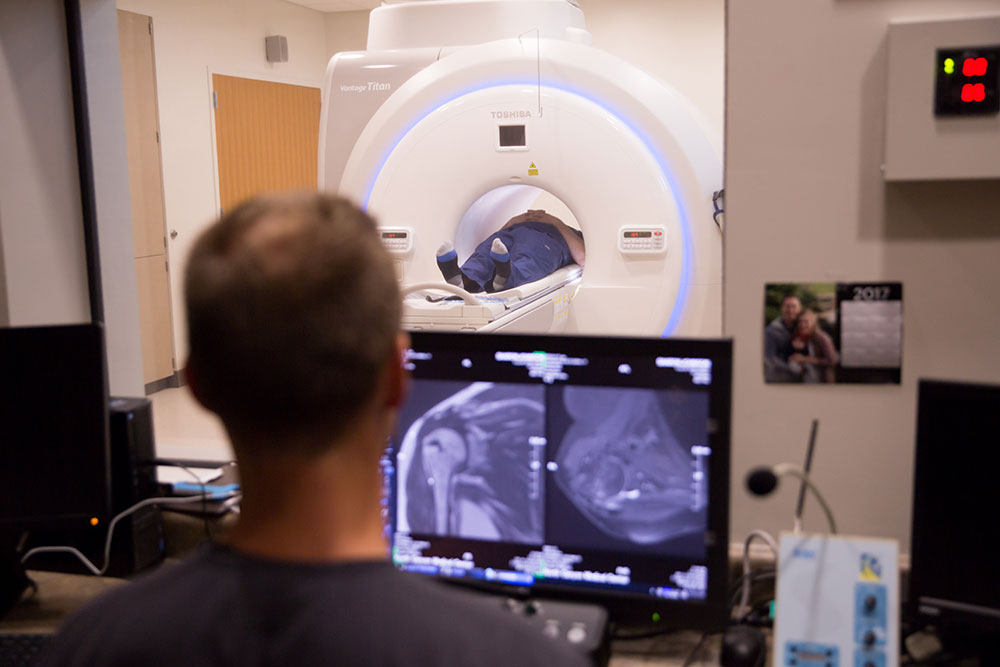A More Comfortable MRI Experience
Magnetic Resonance Imaging (MRI) has traditionally been known for excessive noise and patient discomfort during an exam. At North Canyon Medical Center, we are passionate about providing our communities the best healthcare and have recently improved the MRI experience for our patients.
With the largest opening of any MRI in its class, our new Vantage Titan MRI system represents a new level of comfort and performance. Its patient-friendly features provide plenty of shoulder room and more breathing room from nose to magnet to reduce feelings of claustrophobia. Offering an array of features that boost image quality, patient care, and noise reduction technology, our MRI unit can do more and see things more clearly than ever.
Comfort Redefined
Patient comfort during and MRI exam is essential to provide the best possible images for the most accurate diagnosis. The comfort features in our Vantage Titan MRI make it easier to remain motionless during the exam, while shortening the exam time.
- Largest Opening on the market
- Noise-Reduction Technology
- Open View
- Feet First Exams
- Table Flexibility
- Arm Rests
- Quicker Processing
Magnetic Resonance Imaging (MRI) is a sophisticated diagnostic technique that uses a strong magnetic field and pulses of radio wave energy to take detailed, digital, cross-sectional images of the human anatomy. In some cases, imaging technologists use contrast material to show abnormal tissue more clearly. Imaging technologists can save these digital images to a computer for more study and review them remotely, such as in a clinic or an operating room.
In many cases an MRI may see problems which other imaging methods – X-ray, ultrasound, or computed tomography (CT) scans – cannot see. Because it produces better soft-tissue images than X-rays, MRI is most commonly used to image the brain, spine, thorax, vascular system, and musculoskeletal system.
Head: MRI may look at the brain for tumors, aneurysms, bleeding in the brain, nerve injury, and other problems, such as damage caused by a stroke. MRI can also find problems with the eyes and optic nerves as well as the ears and auditory nerves.
Spine: MRI may check the discs and nerves for conditions such as spinal stenosis, disc bulges, and spinal tumors.
Chest: MRI may look at the heart, valves, and coronary blood vessels as well as breast or lung cancer.
Blood vessels: MRI may find problems of the arteries and veins, such as an aneurysm, blocked blood vessel, or torn lining of a blood vessel.
Abdomen and pelvis: MRI may find problems in the liver, gallbladder, pancreas, kidneys, and bladder. It can find tumors, bleeding, infection, and blockage. In women, it can look at the uterus and ovaries. In men, it looks at the prostate.
Bones and joints: MRI may find problems with arthritis, the temporomandibular joint, bone marrow, bone tumors, cartilage, torn ligaments or tendons, or infection. When X-ray results are not clear, MRI may tell if a bone is broken.
